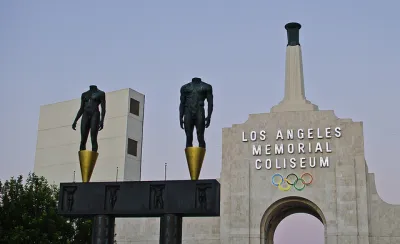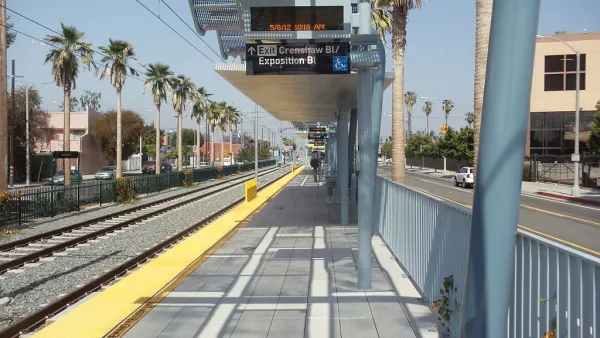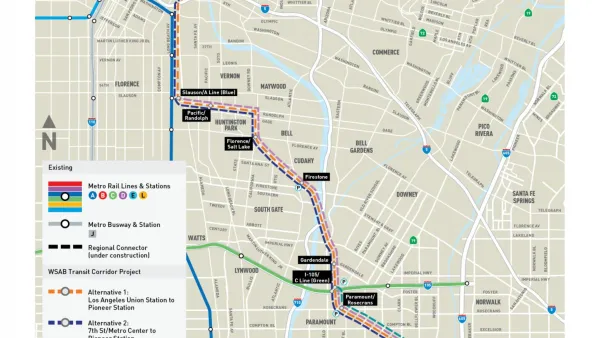Los Angeles officials have been working for years to deliver a suite of transit projects in time for the 2028 Olympics. Planners now hope federal infrastructure funding could reinvigorate the effort.

“If planners and political leaders can pull it off, spectators of the 2028 Olympics would experience a very different Los Angeles from the one traffic-weary commuters know today, one that would endure long past the Games,” reports Rachel Uranga for the Los Angeles Times.
“Olympic organizers are still in the process of creating a transportation plan. But with federal and state authorities spending record amounts on projects resulting from President Biden’s $1-trillion infrastructure law, local planners have a number of proposals for the Olympics,” according to Uranga.
As the article notes, the city is already underway with a number of transportation projects that will contribute to non-automotive mobility during the games, including the D Line (Purple Line) extension to the Westside of Los Angeles, the Regional Connector through downtown, and the long-delayed Crenshaw Line, which bring light rail close to the Los Angeles International Airport after passing through South Los Angeles neighborhoods like Leimert Park along the Crenshaw Corridor.
Moreover, the city’s leadership has presented these Olympics as a chance to accelerate transit projects around the region, with an initiative known as 28 by 28 (the plan has been described as “doomed” and “depressing” by local media since first proposed by Mayor Eric Garcetti in 2017.
So planners for the Los Angeles County Metropolitan Transportation Authority (Metro) have gone back to the drawing board to identify 200 projects “that could help support the Games,” according to Uranga, including “a people mover in Inglewood, an extension of the C Line (formerly the Green line) from Redondo Beach Station to Torrance, a rail line through the East San Fernando Valley, a cybersecurity update on Metro’s system, new protected bike lanes across the region and more bike-sharing programs.”
More details on the various states of these projects (some are already “on the books,” in the words of Uranga), the LA28 task force to coordinate transportation planning across jurisdictions, and the political prospects for the desired transit projects are available in the source article below.
FULL STORY: People mover, new bike paths and bus lanes: 2028 Olympics could fuel a transit boom in L.A.

National Parks Layoffs Will Cause Communities to Lose Billions
Thousands of essential park workers were laid off this week, just before the busy spring break season.

Retro-silient?: America’s First “Eco-burb,” The Woodlands Turns 50
A master-planned community north of Houston offers lessons on green infrastructure and resilient design, but falls short of its founder’s lofty affordability and walkability goals.

Delivering for America Plan Will Downgrade Mail Service in at Least 49.5 Percent of Zip Codes
Republican and Democrat lawmakers criticize the plan for its disproportionate negative impact on rural communities.

Test News Post 1
This is a summary

Test News Headline 46
Test for the image on the front page.

Balancing Bombs and Butterflies: How the National Guard Protects a Rare Species
The National Guard at Fort Indiantown Gap uses GIS technology and land management strategies to balance military training with conservation efforts, ensuring the survival of the rare eastern regal fritillary butterfly.
Urban Design for Planners 1: Software Tools
This six-course series explores essential urban design concepts using open source software and equips planners with the tools they need to participate fully in the urban design process.
Planning for Universal Design
Learn the tools for implementing Universal Design in planning regulations.
EMC Planning Group, Inc.
Planetizen
Planetizen
Mpact (formerly Rail~Volution)
Great Falls Development Authority, Inc.
HUDs Office of Policy Development and Research
NYU Wagner Graduate School of Public Service





























